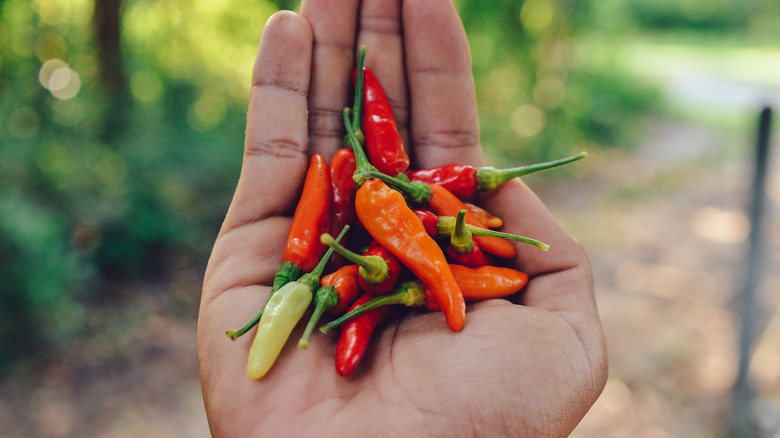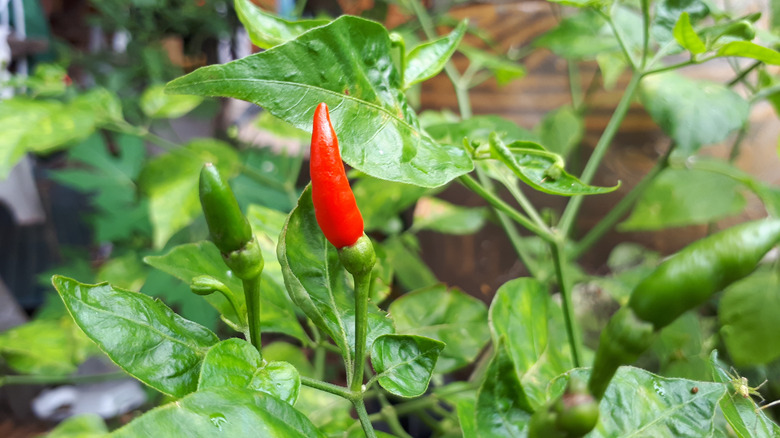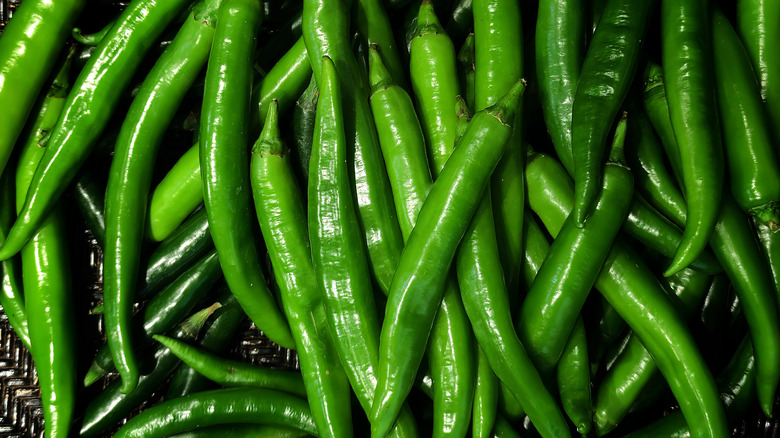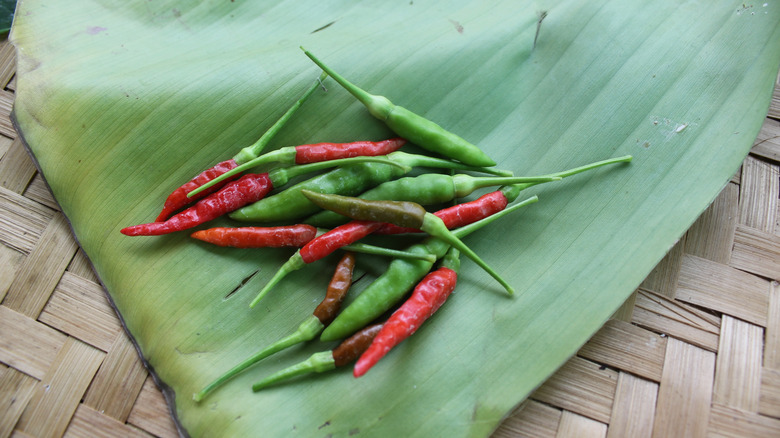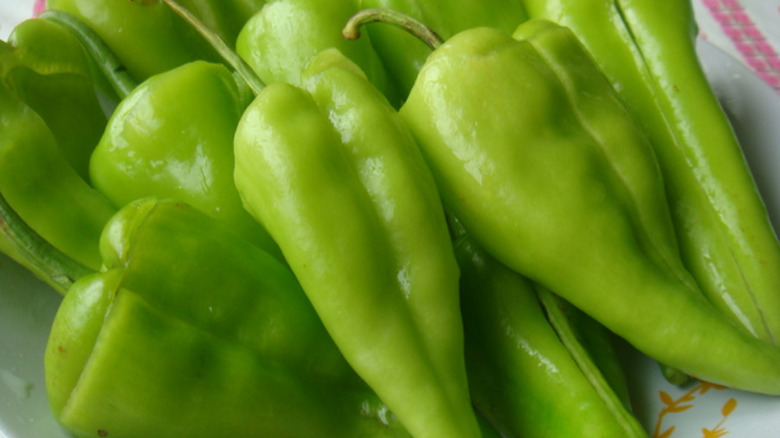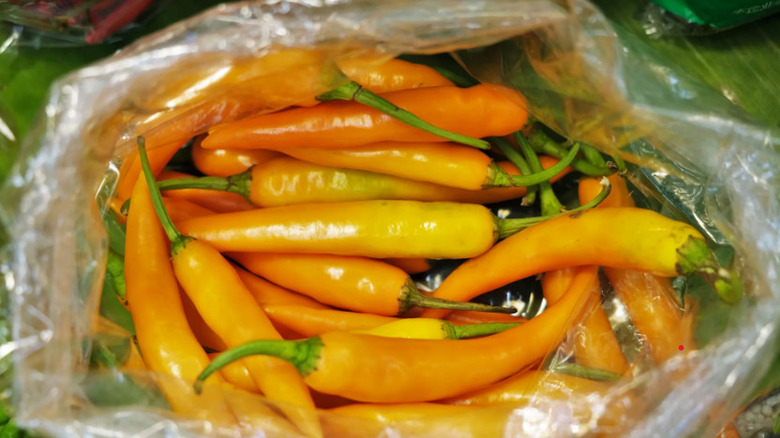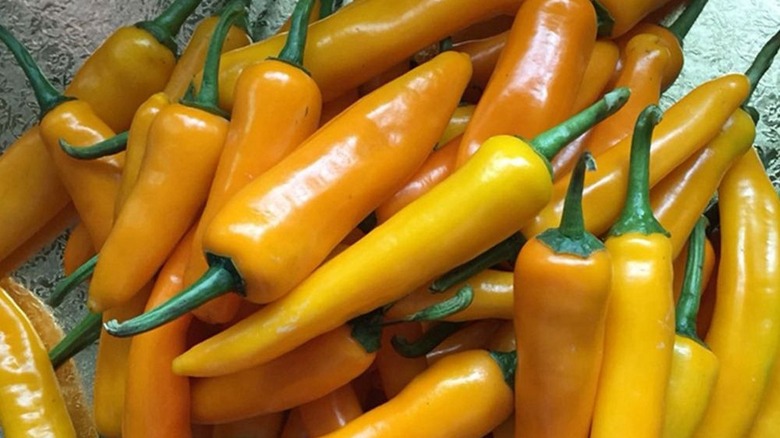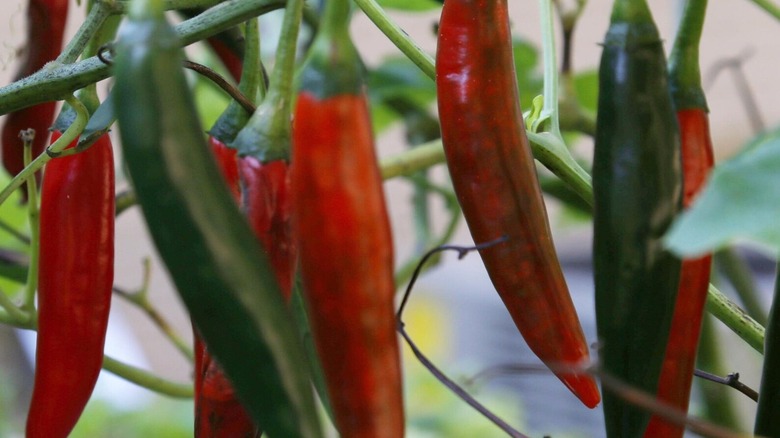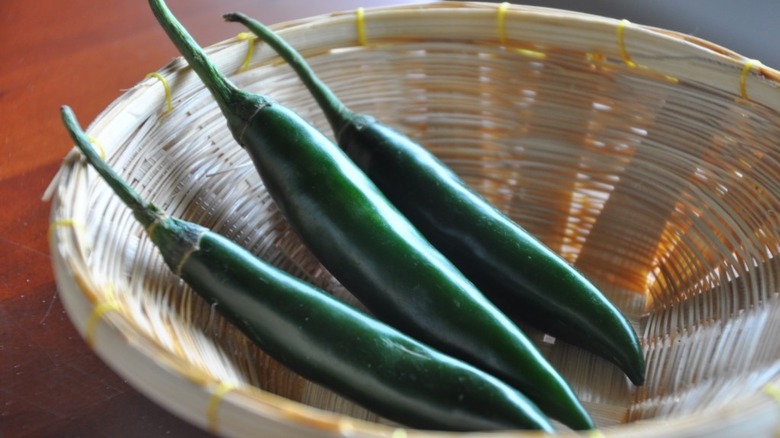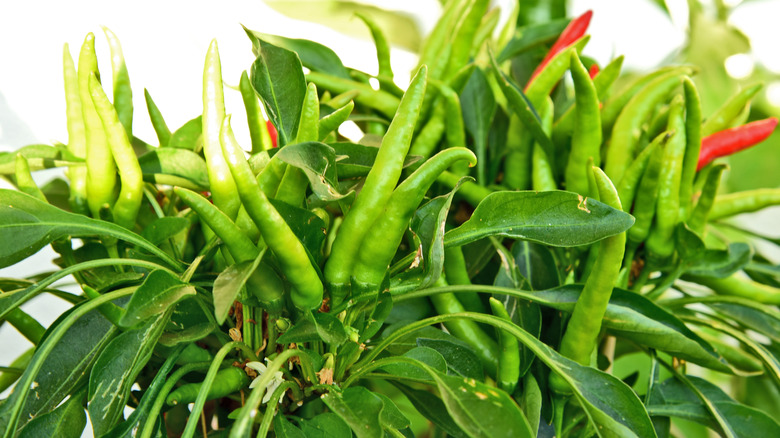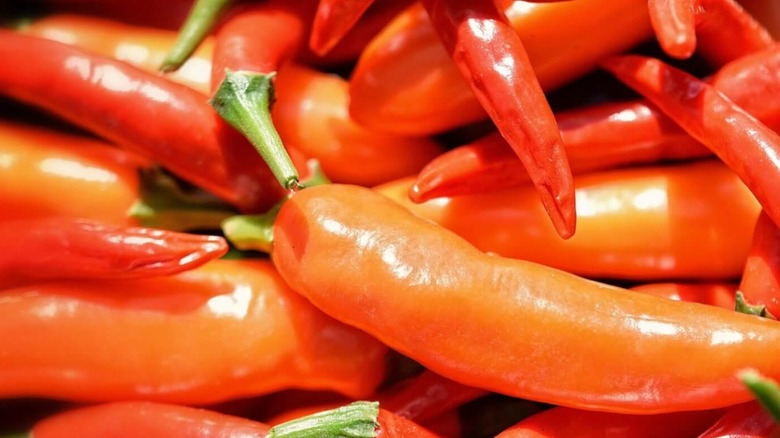The Ultimate Guide To Thai Chili Peppers
Chili peppers' epic journey has transformed global cuisine. Hailing from South America, they quickly spread to the Caribbean, Venezuela, and the Andes, igniting a worldwide love affair. Chilies arrived in Thailand with Portuguese traders around the 15th century. While the Portuguese may have failed in their Christian mission, they succeeded in changing the course of Thai cuisine forever. Today, Thai cuisine is widely adored, thanks in no small part to the chili pepper's transformative power.
Thai chilies will take your next meal to a new level, whether you crave a tear-jerking kick or a comforting warmth. From spicy glass noodles with papaya and chili vinaigrette to the tangy and sweet Thai glazed ribs, the mighty pepper transforms Thai dishes into mouth-watering culinary delights that will have your taste buds singing its praises. So, let's embark on a journey into the world of Thai chilies and discover a range of the most famous and new emerging breeds of these fiery little wonders.
Prik kee noo: A chili defining Thai cuisine
If you want to set your taste buds ablaze, the fiery and flavorful bird's eye chilies are what you need. These mighty little peppers, known as prik kee noo in Thailand, are a must-have ingredient in Thailand's vibrant and aromatic cuisine. Like the Tabasco chili, which has found its fame in North America, the bird's eye chili is the true superstar in the Thai culinary scene. With just one chili, you can add a tantalizing tingle of heat that will be manageable for your palate. It's worth trying the green and red bird's eye chilies of similar size. Whereas the green peppers offer a tangy and pungent flavor, the red ones provide a sugary and blazing punch.
Bird's eye chilies are indispensable in popular Thai dishes such as green papaya salad and pad kra pao (Holy basil chicken stir-fry). These small chilies pack an extra spicy punch to elevate any recipe, but if you want to create an authentic Thai experience, try bird's eye chili in your curry pastes, soups, or stir-fries. These chilies are also a staple ingredient in Thai condiments, like nam prik kapi (Thai shrimp paste chili sauce). A note of caution: If you're not a fan of too much heat, you should skip to some milder Thai chili varieties.
Prik chi faa: The green jewel of Thai peppers
Prik chi faa is a large Thai hot pepper that will elevate any recipe with its medium-hot kick and smooth, glossy skin. It's highly versatile too. When still immature, prik chi faa is used in authentic Thai recipes like green curry paste, chili dip, or satay sauce. The medium heat of prik chi faa adds just the right amount of kick, enhancing the flavors of the other ingredients without overpowering them. Prik chi faa becomes even more versatile as it ripens; drying it will make an addictive chili powder.
But prik chi faa isn't just a wholesome ingredient, it's a beautiful garnish for any dish. Recognized for its uncomplicated elegance, it's frequently employed in its raw or preserved form to introduce a burst of vividness. And if you need further convincing of the prik chi faa's culinary prowess, ask chef Prin Polsuk of the famous Nahm restaurant in Bangkok. He uses the pepper in his ma hor, the irresistible combination of pork and shrimp spread atop juicy pineapple.
Prik kee noo suan: The little pepper with a big flavor
Prik kee noosuan, or "mouse drop chili," is a thrill-seeker's dream come true. Despite its small size, this tiny pepper packs a punch unmatched by other prik kee noo varieties. The pepper plant produces hundreds of little pods that ripen from light green to a brilliant shade of red, each carrying a unique level of heat that will take you on a wild ride. You may encounter some red ones that release their full potency immediately, while others may gradually build up, leaving you with an exciting, mouth-burning experience.
This pin-sized pepper may look harmless, but it's a force to be reckoned with. Its spiciness is a hallmark of Thai cuisine and can be found in everything from zesty salads to spicy curries. Unripe prik kee noo suan is an essential ingredient in green curry paste, lending its signature color and bold flavor. In Thailand, salt and pepper shakers take a backseat to a fish sauce condiment infused with these tiny, fiery chilies; usually, they are sliced into thin rounds and drenched in sauce, ready to burst with heat. So next time you feel daring, try this small but mighty chili and brace yourself for a flavor explosion.
Discover the subtle flavor of prik yuak pepper
Prik yuak is a sweet and mild pepper that may not be as famous as its spicy cousins, but nonetheless an authentic addition to Thai cuisine. Its light green color stays the same even as it ripens, and the sweet taste sets it apart. Originally from Central and South America, prik yuak made its way to Thailand in the 1600s and has been a beloved ingredient ever since. This pepper has very little spice, making it ideal for those who want to savor the flavor without the burn.
In Thailand, prik yuak has many names, including Thai sweet and Banana pepper. These peppers can grow up to seven inches long and weigh around 1.16 ounces at maturity. Their versatility makes them a kitchen favorite – they're perfect for cooking mild dishes or as a substitute for spicier peppers. Whether you eat them raw, add them to stir-fries for color and texture, or enjoy them pickled in vinegar as a condiment, prik yuak is guaranteed to add a sweet crunch to any dish.
Add depth to your dishes with prik kariang chili
While the bird's eye chili is a classic choice for die-hard Thai chili fans, the prik kariang (or karen chilies) is a truly authentic Thai gem. These little chilies are more expansive and have pointy tips. Unfortunately, finding them outside specialist Asian supermarkets can be challenging, but if you stumble upon them, don't hesitate to try them. One Twitter user shared he managed to find those in the fresh market in Hat Yai on his trip to Thailand, as the vibrant pastel hues of the karen chilies caught his eye.
The prik kariang is a bold and daring choice for those who crave a challenge. This chili pepper begins its journey with a gentle, verdant hue before transitioning into a scorching amber or tangerine shade, ultimately culminating in a rich, crimson red. The heat of this chili does not hit right away but builds up quickly, leaving your mouth in flames and your eyes watering in no time. With heat levels that would make even the most intrepid diners break a sweat, this fiery chili poses the test of courage. For those seeking an authentic and genuinely spicy Thai cuisine experience, the prik kariang is an absolute must-try.
Prik lueng: A rare treat for chili lovers
Prik lueng is a unique and versatile banana pepper found in Thai markets. These small, cone-shaped peppers may look unassuming, measuring just 2 to 3 inches, but they pack a flavorful punch. Prik luengs can add a sizzling sensation to your tongue with their tangy sweetness and mild spiciness. They are perfect for those who want to add a touch of heat to the recipe without it being too overpowering — you'll still get a little sweat on the forehead. As prik lueng ripens from green to bright orange to red, they add a stunning tint to any dish.
With its versatile flavor profile and colorful appearance, the prik lueng pepper is a must-try for any Thai chili enthusiast. Prik luengs can be used in a variety of recipes. They are perfect for zingy salads, milder Thai soups, Asian stir-fries, or rice dishes. You can also get creative with pickling the prik lueng chili or try making the classic pad phet gai (spicy Thai chicken stir-fry) to experience the full range of prik lueng's culinary potential.
Prik bang chang: The exotic chili you need to try
Nestled in the southern district of Ban Chang, the prik ban chang is a Thai pepper that has a mild yet flavorful kick. Originally from South America, like all chili peppers, prik ban chang thrives in Ban Chang's warm tropical climate. With a Scoville score between 30,000 and 60,000 SHU, they bring a subtle heat to any dish.
These cylindrical peppers have smooth skin and can grow 5 to 7 inches long. Their skin can range from green to red depending on their level of ripeness, with the former offering a more subdued flavor profile. At just over 1 ounce in weight, prik ban chang has a mildly spicy and peppery flavor with a refreshing twist. Sundried prik ban chang is a popular snack and garnish for Thai stir-fries, aromatic salads, or rice dishes. At the same time, their low seed count makes them a coveted ingredient in curries and chili pastes.
Prik mun: The spicy delight from Thailand
Prik mun is an heirloom variety of medium-hot, oblong-shaped Thai chili pepper, suited for real foodies and chili pepper fans. While prik mun peppers may not be the spiciest on the Scoville scale, they offer a flavorful peppery kick and are known for their distinctive oiliness. These glossy peppers grow to about 5 to 7 inches long and weigh just under 1 ounce each. Their smooth green skin turning red at maturity makes them a visually stunning addition to any food presentation.
Prik mun peppers are a versatile ingredient that can transform any dish into a Thai street food experience. These peppers are an integral part of Thai cuisine, commonly found in relish-like condiments at almost every restaurant and food stall. Whether pickled for a crunchy kick or sliced and used as a topping for a flavorful finish, these peppers are a must-try for anyone looking to explore the sweet and spicy flavor of prik mun. Bring the taste of authentic Thailand to your kitchen with these unique and flavorful peppers.
The bright heat of prik jinda
Prik jinda is a slender and elongated chili considered medium-hot in Thailand. Sold in fresh markets throughout the country, the green and red varieties are commonly mixed together and used in medium-spiced dishes. Though they may not be the hottest chili pepper (for heat-lovers at least), their unique flavor profile and subtle warmth offer a perfect balance for adventurous foodies exploring the different Thai chilies.
Prik jinda is an excellent starting point for those looking to expand their spice tolerance or experiment with new flavors. Prik jinda peppers grow 3 to 5 inches when fully mature with a glowing red color. With their smooth and glossy exterior and pointed tip, these peppers bring stunning detail to any dish they grace. While fresh prik jinda are rarely used, dried jinda peppers are essential in many Thai dishes, from regular stir fries to signature curries. These dried peppers are usually incorporated into recipes whole but in much smaller quantities as a replacement for a more zesty fresh chili.
Prik kaleang: Unlocking the secret of Thailand's hottest pepper
Prik kaleang stands as the undisputed champion of spiciness in Thai cuisine. At 50,000 to 100,000 SHUs, its fiery kick is enough to make even the most seasoned Thai locals break a sweat. At the celebrated Thai restaurant Nahm in Bangkok, chef Prin Polsuk's infamous jungle curry, comprising 50% prik kaleang and 50% prik kee noo suan, is a challenge only the brave-hearted can endure. This scorching dish is not on the menu but exclusively served to adventurous tourists daring enough to tackle the extreme heat.
But the prik kaleang is not only about heat; its unique flavor has made it a favorite choice among Thai chefs for creating time-honored curries and other Thai classics, including the famous pad thai. The prik kaleang's gradual transformation from a pale yellow-green to a stunning, fluorescent orange-red during maturation is a feast for the eyes. Adding a burst of color to your culinary creations, the prik kaleang is a must-try for spice enthusiasts. With its distinct attributes, this chili will take your taste buds on a fiery and unforgettable journey.
